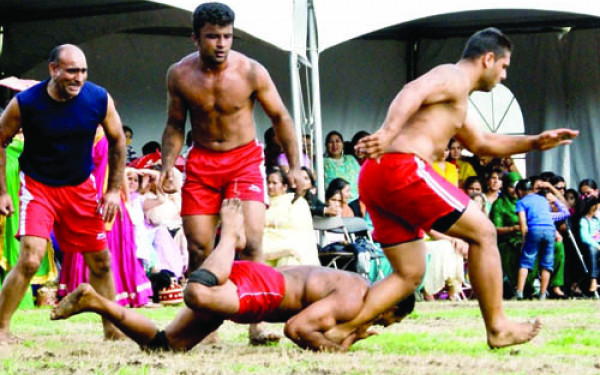Montreal Via Holland
How Men’s Soccer Team Target-Man Matthijs Eppinga Ended Up at Concordia
The men’s soccer team has finally got some depth up front.
The strike partnership between Toronto native Fred Moody, second-year player Claude Arthur Diesse and Dutch exchange student Matthijs Eppinga is one that cannot be easily matched, particularly because each player is over six feet tall and can all put the ball in the back of the net.
But how did Eppinga, the newest player of the three, make it onto coach Lloyd Barker’s squad? While the actual answer to that question is quite simple, the route Eppinga took to end up at Concordia is interesting to say the least.
Eppinga was born in the small town of Drachten, Netherlands on February 21, 1988. He started playing soccer at the age of six and began his career as any normal child would by toiling for his local club.
At 14, youth academy coaches from SC Cambuur Leeuwarden—a professional Dutch side that plays around 30 kilometres northwest of Drachten—recruited him.
The club has served as a starting point for some Canadian players who have plied their trade abroad, including current University of British Columbia Thunderbird Brandon Bonifacio. But after four years of daily training sessions at SC Cambuur, Eppinga felt it was time to concentrate on his studies.
However, the six-foot-three, 187-pounder, had not lost touch with his footballing side completely, as his next step was to accept a soccer scholarship to Franklin Pierce University in New Hampshire to study international business management.
The Franklin Pierce Ravens’ men’s soccer team is regarded as one of the top teams in the National Collegiate Athletic Association’s Division II, and even produced former Montreal Impact player Felix Brillant.
Former head coach Marco Koolman, who is now associate head coach of the NCAA Division I Boston College Eagles, was an influential figure in bringing Eppinga into the fold at Franklin Pierce.
“He travelled around Europe to look for players,” said Eppinga of his countryman. “He was really about discipline, working hard and personality. It wasn’t just if you were a good soccer player that you got to play. He was a complete coach.”
Eppinga spent two seasons with the Ravens before winning the 2007 national championship.
“I would say we had a Division I squad,” said Eppinga, whose team, like most in the NCAA, played exhibition games against NCAA Division I opposition.
“There were more European players in Division II for some reason and that changed the game a bit—people would play more for possession and less like the Americans [who employed] the long ball [tactic].”
After his experience at Franklin Pierce, Eppinga moved back to the Netherlands and played for Dutch amateur side Flevo Boys in Emmeloord, roughly one hour south of his hometown.
Under head coach and former SC Heerenveen striker Willem Brouwer, Eppinga helped Flevo Boys gain promotion to the newly implemented Dutch third division last season.
“If we win the championship, we get to play in the pro league. So it’s a big step,” said Eppinga, who plans to return home after his time at Concordia.
Eppinga could have chosen another continent, never mind a country or city, for his semester abroad. But his time in the United States gave Eppinga the desire to explore North America, specifically Montreal.
It’s no accident that the Dutchman is now playing for the Stingers. He sent coach Barker an email inquiring whether he could play under him upon deciding to continue his studies at Concordia, and he was later afforded a spot on the team.
“His main asset is that he knows the game very well,” said Barker during the preseason. “He’s come through a good development system and knows what is required of him to succeed at the university level. We’re over the moon to have him, believe me.”
Eppinga’s role as a target man for coach Barker may not come as a shock to many because of his size, but the 22-year-old admitted he had been utilized for various other situations in his home country, where most players are more-or-less the same height as him.
This article originally appeared in Volume 31, Issue 05, published September 14, 2010.

__900_598_90.jpg)
_600_832_s.png)


_600_375_90_s_c1.jpg)
1_600_375_90_s_c1.jpg)
1_600_375_90_s_c1.jpg)